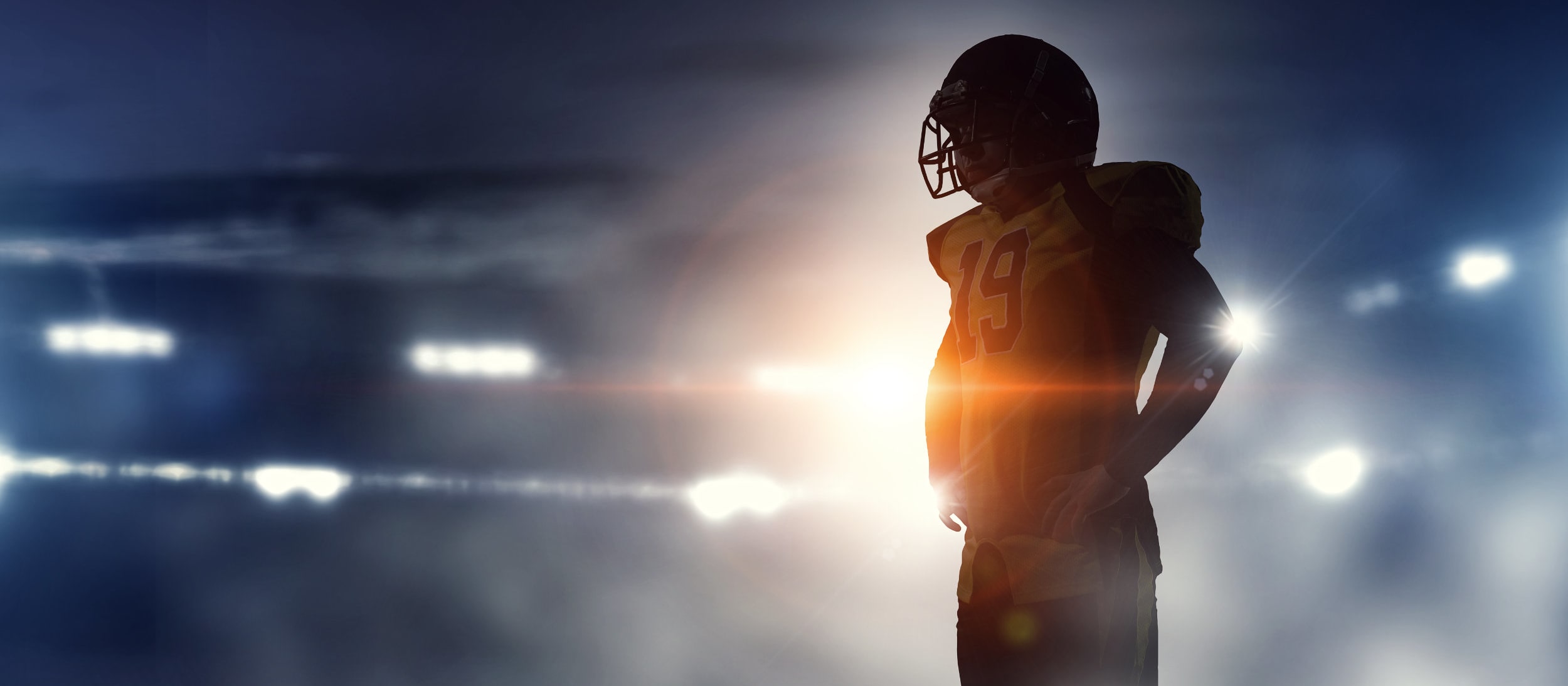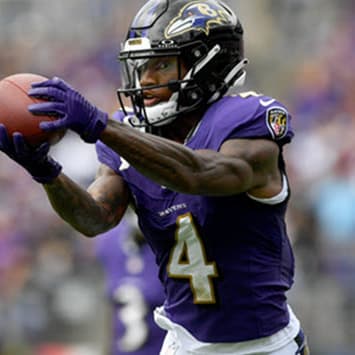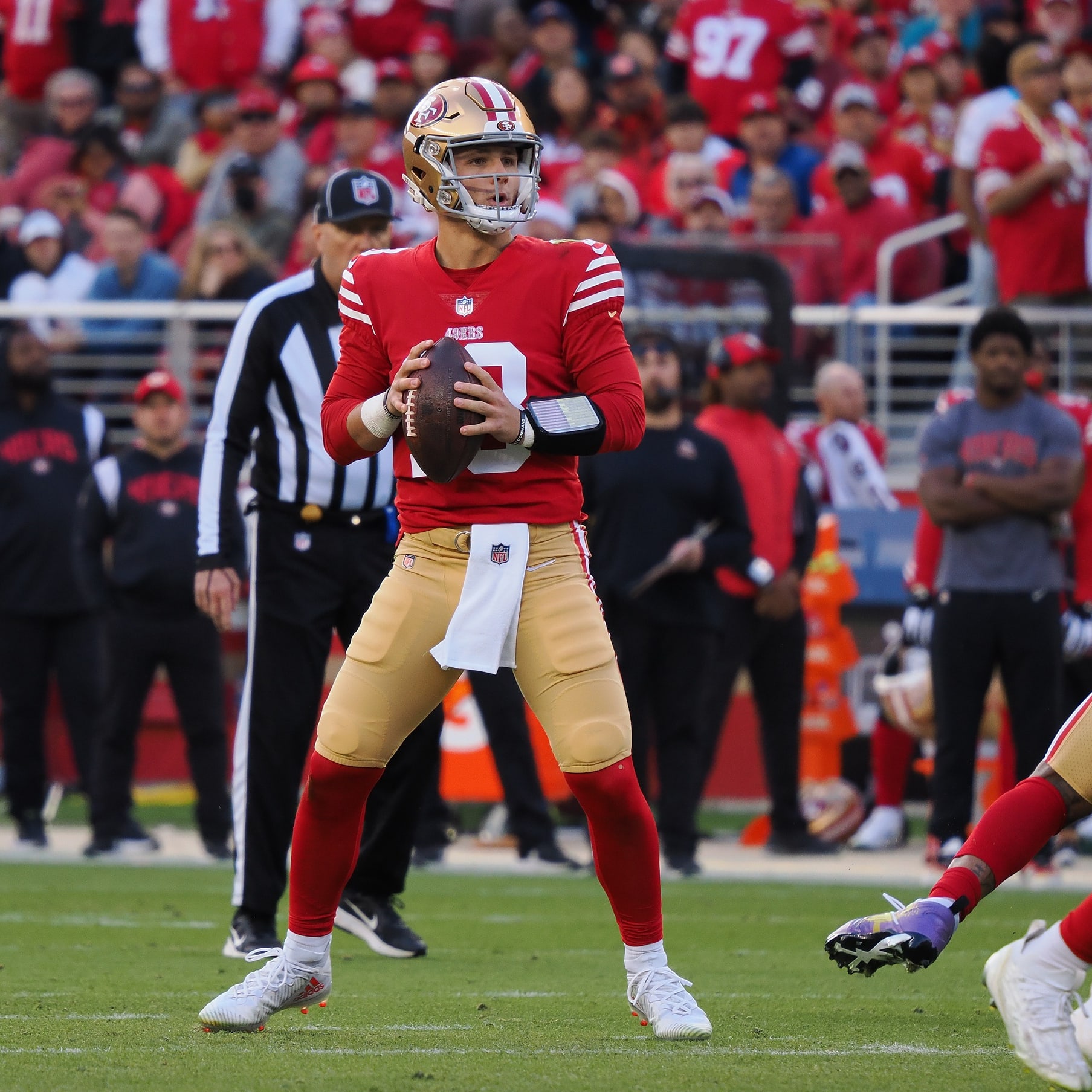This article is part of our Injury Analysis series.
Hamstrung Players
The injury grabbing all the headlines in NFL training camps is hamstring strains. The ailment is far too common but not surprising given the makeup of today's NFL player and the demands of the sport.
The hamstring is a dynamic muscle group. It's a two-joint muscle working to bend the knee (knee flexion) and extend the hip. The hamstring works in the opposite direction of the quadriceps muscle group. This antagonistic relationship allows the two muscle groups to accelerate and decelerate the knee, like when a running back is attempting to hit a hole or a receiver explodes off the line of scrimmage. The relationship between the hamstring and quadriceps can play a role in injury if there is an imbalance in strength between the two opposing muscle groups. If the athlete's hamstring is considerably weaker than his quadriceps, it is unable to equally counteract the strong contraction of the quad leaving the hamstring vulnerable to strains. Once a strain occurs, hamstring injuries can take considerable time to heal. The healing process is divided into multiple phases, but we will focus on the final few parts.
After the body's initial reaction to the injury, the damaged tissue begins to be repaired and restored. Scar tissue, compromised of collagen and elastin, develops at the injury site. This phase, known as the proliferative phase, generally takes four to six weeks depending on the severity of the strain. Occasionally, an injured player will return following the proliferative phase, though he often
Hamstrung Players
The injury grabbing all the headlines in NFL training camps is hamstring strains. The ailment is far too common but not surprising given the makeup of today's NFL player and the demands of the sport.
The hamstring is a dynamic muscle group. It's a two-joint muscle working to bend the knee (knee flexion) and extend the hip. The hamstring works in the opposite direction of the quadriceps muscle group. This antagonistic relationship allows the two muscle groups to accelerate and decelerate the knee, like when a running back is attempting to hit a hole or a receiver explodes off the line of scrimmage. The relationship between the hamstring and quadriceps can play a role in injury if there is an imbalance in strength between the two opposing muscle groups. If the athlete's hamstring is considerably weaker than his quadriceps, it is unable to equally counteract the strong contraction of the quad leaving the hamstring vulnerable to strains. Once a strain occurs, hamstring injuries can take considerable time to heal. The healing process is divided into multiple phases, but we will focus on the final few parts.
After the body's initial reaction to the injury, the damaged tissue begins to be repaired and restored. Scar tissue, compromised of collagen and elastin, develops at the injury site. This phase, known as the proliferative phase, generally takes four to six weeks depending on the severity of the strain. Occasionally, an injured player will return following the proliferative phase, though he often experiences continued limitation or suffers a reoccurrence of the injury. That's because the final step, the remodeling phase, has yet to be completed.
During this phase, the new tissue fibers are continually broken down and remade to return the muscle tissue to peak strength. While the muscle may look normal and the player reports limited or no discomfort, the new tissue remains susceptible to re-injury, sometimes for as long as a year. This is why players like Odell Beckham and others battle hamstring injuries for a significant period. The athlete feels good and is able to perform activities under a controlled environment, but as soon as he is exposed to high-intensity, game-like conditions he ends up back on the sidelines.
Fortunately, NFL medical staffs are well aware of these factors and frequently take a conservative approach with treatment, often to the chagrin of the athlete. NFL players enduring these circumstances include Broncos receiver Emmanuel Sanders, Dallas' Dez Bryant and Atlanta running backs Devonta Freeman and Tevin Coleman.
Emmanuel Sanders: Sanders suffered what was initially ruled a right hamstring cramp Aug. 6. However, after sitting for the team's next 11 practices, Sanders admitted it was "a little more than a cramp." The Broncos plan on sitting their second leading receiver for at least a few more practices. His value hasn't yet taken a drastic dip, but I would be less inclined to make him my primary receiver.
Dez Bryant: The Cowboys plan on withholding Bryant for at least one more preseason game, though he's participated in high-level individualized drills in shoulder pads and a helmet over the last few days. The team is targeting Aug. 29 for Dez's preseason debut and hope he can record at least a few practices before the exhibition against the Vikings. Again chalk this up to Jerry Jones and the Cowboys being particularly careful with their $70 million investment.
Devonta Freeman, Tevin Coleman: The Falcons' running backs appear ahead of Bryant and Sanders in their recovery and were active participants in Monday's team practice. Freeman and Coleman continue to battle for the starting running back spot, though the injuries have prevented either from pulling ahead of the other.
Kevin White
The Bears' rookie receiver is dealing with an injury much more serious than a hamstring strain. White is slated to undergone surgery to address a stress fracture in his left tibia later this week. The injury is interesting because it is fairly uncommon in the NFL. However, these types of fractures generally develop following excessive workloads from things like running and jumping, meaning it's not overly surprising to see one occur in a wide receiver. A rod will be inserted to stabilize the area of concern, and White has been ruled out for at least the first six games after being placed on the PUP list.
Determining White's long-term value is tricky due to the lack of comparable cases in the NFL. However, several similar injuries have popped in the NBA the last few seasons, and they don't instill much confidence in a quick return. Pelicans point guard Jrue Holiday and Mavericks center JaVale McGee both underwent surgery to stabilize a stress fracture in their tibia and both missed substantial time after surgery AND in the following season as associated symptoms lingered. Holiday recently underwent an additional procedure to remove surgical hardware in the bone and continues to work his way back nearly two years after going under the knife.
As mentioned, White will face a similar recovery given the demands of his position. As a result, I wouldn't count on the seventh overall pick playing meaningful snaps this season. Even his value in keeper leagues takes a hit. In the meantime, Eddie Royal and Marquess Wilson are moving up draft boards, especially with Alshon Jeffery sitting with a minor calf strain.
Turf Burns
C.J. Spiller: A change in scenery hasn't improved Spiller's recent inability to remain healthy. The speedy running back has proven to be a fantasy friendly option in the backfield but was limited last season after suffering a fractured collarbone. He signed with the Saints this offseason, hoping to add another dimension to the New Orleans attack. However, he will miss the remainder of the preseason after undergoing arthroscopic knee surgery. The procedure was described as routine, meaning he likely underwent a debridement procedure to remove some problematic cartilage or scar tissue. The team is optimistic he will return for the regular season, but drop him down your draft board.
Julius Thomas: The Jaguars tight end will miss the remainder of the preseason after he suffered a fractured bone in his right hand. The injury was described as being a "stable" fracture near his middle finger. This suggests he suffered a non-displaced fracture of the third metacarpal, one of the long bones that make up the hand. The break being non-displaced means the bones remain in alignment and will not require surgery. Instead, he will simply need time to let the bone mend. The team hopes he can be ready for the start of the regular season, but the location of the injury will make things difficult to block and catch. Furthermore, the time missed prevents him from developing a rapport with his new quarterback. I would avoid making Thomas my top option at tight end.










